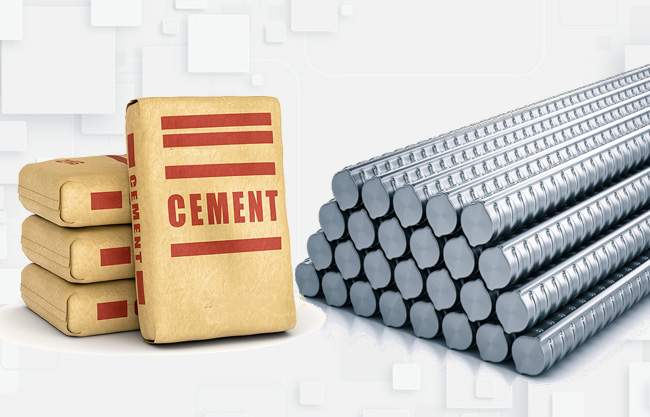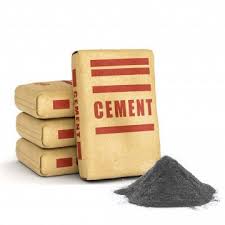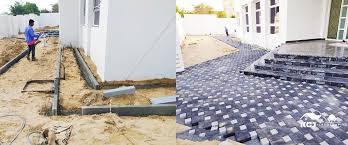Dubai’s construction industry has always been one of the key drivers of economic growth in the region. With towering skyscrapers, luxury villas, and sprawling infrastructure projects, cement remains an essential commodity powering this development. As we move through 2025, understanding the dynamics of cement Price in Dubai has become more important than ever, not only for contractors and businesses but also for investors and homeowners planning to build or renovate.
What Determines Cement Prices in Dubai?
Cement prices in Dubai do not fluctuate arbitrarily. Several key factors shape the current market trends. Supply and demand dynamics play a crucial role. Dubai is a hub for large-scale construction projects, which consistently demand large quantities of cement. As a result, any change in project approvals, population growth, or infrastructure expansion directly impacts demand.
The cost of raw materials is another significant contributor. Cement production relies heavily on limestone, clay, and gypsum, among other materials. Global commodity prices, transportation costs, and supply chain disruptions can cause significant price changes.

Additionally, government policies and regulations affect pricing. Import duties, tariffs, and environmental regulations influence the overall cost structure for cement suppliers. Local manufacturers also face challenges such as energy costs and operational expenses, which are passed on to consumers.
Current Cement Price Trends in Dubai
As of now, the average price for a bag of cement in Dubai ranges between AED 25 to AED 40, depending on the brand and type. Bulk orders for larger construction projects tend to get preferential pricing due to volume discounts.

Over the last year, prices have seen a gradual increase. The main reason behind this rise is the ongoing global economic shifts, particularly the impact of higher fuel costs, inflationary pressures, and supply chain bottlenecks. These factors have led manufacturers and suppliers to adjust prices to maintain sustainable operations.
Furthermore, Dubai’s ongoing mega projects, including Expo-related developments and upcoming infrastructure initiatives, have spurred demand, putting additional upward pressure on prices.

Comparing Cement Prices: Local vs Imported
One important aspect to consider is the difference between locally manufactured cement and imported brands. Local manufacturers generally offer more competitive pricing because of lower transportation costs and easier market access. However, imported cement is often perceived to be of higher quality, especially when sourced from well-established international brands.
Imported cement prices tend to be higher due to additional shipping fees, import duties, and compliance with UAE regulations. Still, some specialized projects prefer imported cement for its specific technical properties, even at a higher cost.
Impact of Cement Prices on Dubai’s Real Estate Market
Cement is the backbone of any construction activity, and its price fluctuations directly affect the real estate market in Dubai. Higher cement prices often translate into higher construction costs, which can slow down the launch of new projects or force developers to adjust property prices.
For investors and homeowners, rising cement prices could mean a potential increase in property prices or renovation costs. On the other hand, a stable cement price environment encourages new construction and investment in real estate.
Smaller contractors and individual homeowners tend to feel the impact more acutely since they lack the purchasing power of large developers who can negotiate bulk discounts.

Government Measures and Industry Response
To stabilize the market, the UAE government has implemented several measures over the years. These include streamlining import processes, reducing tariffs where necessary, and promoting local production to lessen dependency on imports.
The industry has responded by investing in new technologies to improve production efficiency and lower costs. Cement manufacturers in the region are increasingly focusing on sustainable practices to cut energy usage and improve output.
These efforts aim to balance market supply and demand, ensuring that cement remains affordable without compromising quality.
How Will Future Projects Affect Cement Prices?
Dubai’s ambitious future projects continue to play a major role in shaping cement price trends. Upcoming plans such as the expansion of Dubai Metro, new residential compounds, and major infrastructure upgrades will further drive demand.
Experts predict that while there might be periodic price corrections due to market fluctuations, the overall trend is likely to remain upward for the foreseeable future. The pace of urbanization, government investments, and the growing population will keep the demand robust.
Tips for Contractors and Homeowners Amid Rising Prices
For contractors and homeowners feeling the pressure of rising cement prices, it’s important to plan ahead. Buying in bulk during price dips or negotiating long-term contracts with suppliers can offer significant cost advantages.
Additionally, exploring alternative building materials where feasible—like fly ash cement or blended cement options—can reduce dependence on traditional cement without sacrificing quality.
Monitoring market trends closely and staying connected with industry updates will help businesses and individuals make informed decisions.

Conclusion: Cement Prices Reflect Dubai’s Growth Ambitions
Cement prices in Dubai are more than just numbers; they reflect the city’s ongoing development, economic shifts, and future growth ambitions. While prices may rise, they are also a sign of a booming economy and expanding infrastructure.
For those involved in construction, real estate, or even home improvement, staying informed and planning wisely is key to navigating this dynamic market. In the end, Dubai’s cement price story is one of opportunity, growth, and resilience in the face of global challenges.
Do follow UAE Stories on Instagram
Read Next – Why Charles & Keith Dubai Mall Is The Ultimate Fashion Destination















